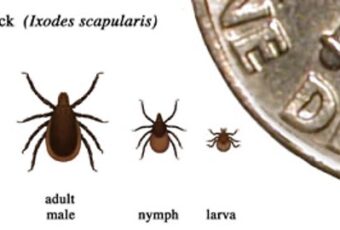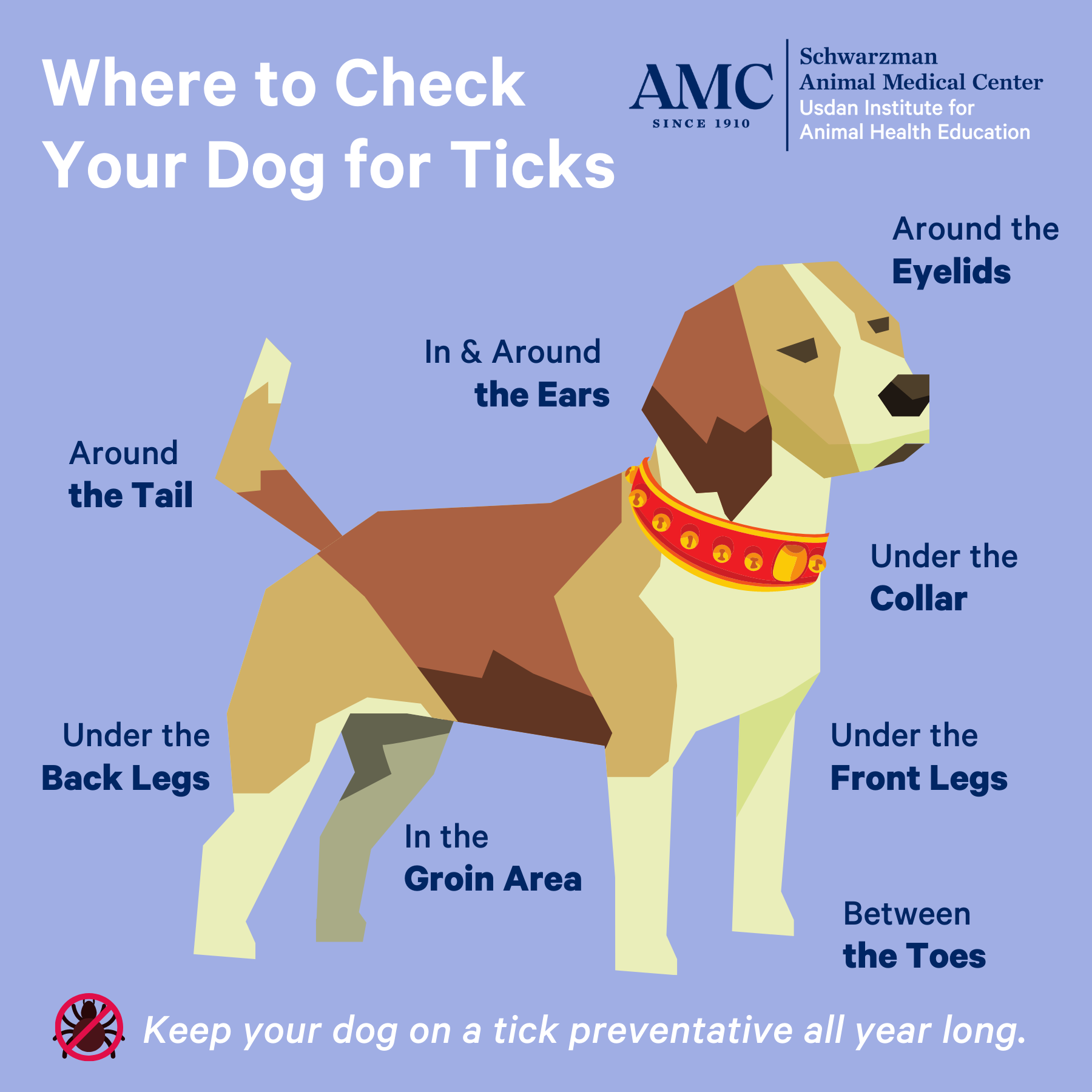Lyme Disease in Dogs: Risk Factors, Signs, and Treatments

Background
Lyme disease is a bacterial infection caused by Borrelia burgdorferi and transmitted through the bite of an infected tick. Transmission of the bacteria can take between 24 to 48 hours after the tick attaches. Lyme disease can result in damage to the joints, kidneys, and nervous system. Lyme disease does not pose a significant threat to cats.
The two species typically responsible for transmitting Lyme disease in North America are Ixodes scapularis (eastern black-legged tick) and Ixodes pacificus (western black-legged tick), also known as deer ticks. These ticks have three life stages (larvae, nymphs, adults). Each stage must feed on the blood of a warm-blooded animal in order to survive. If blood is infected with the bacteria Borrelia burgdorferi, the tick can spread the infection to the next animal it bites. As Lyme disease requires a tick bite to transmit the infection, people or pets diagnosed with Lyme disease cannot directly infect one another.
Risk Factors
Dogs and people are both susceptible to developing Lyme disease if they are bitten by an infected black-legged tick. These ticks are quite small and may go unnoticed, with the nymphs approximately the size of a poppy seed and adults approximately the size of a sesame seed. As it can take between 24 to 48 hours to transmit the disease-causing bacteria, it is important to remove the tick as quickly as possible. While there is a higher risk of transmission from the spring to fall as nymphs and adult ticks search for hosts, infections can occur all year-round.
In the US, Lyme disease commonly occurs in the Northeast, Upper Midwest, and West Coast states, although there have been reported cases of Lyme disease in dogs in every state. In certain areas of the US, over 50% of nymph and adult ticks were shown to be infected with B. burgdorferi. There are also reported cases of Lyme disease in Europe and Asia (caused by different tick species).
While ticks can be found outdoors in wooded areas, it is a myth that ticks fall from the trees and onto their host. Instead, ticks are found in the underbrush. Ticks will climb up and rest on the tips of grasses or shrubs with their upper legs outstretched in a position called “questing.” The tick will climb onto an animal or human when they brush against the plant. For this reason, the risk of transmission is increased for pets and people spending time outdoors, particularly in areas with lots of shrubbery or tall grass. Even backyards can be sites of disease transmission.
Signs
The most common clinical signs of Lyme disease in dogs include:
- Fever
- Loss of appetite
- Painful or swollen joints
- Lameness appearing to
- Swollen lymph nodes
- Lethargy
Clinical signs of Lyme disease may not appear for 7 to 21 days after the initial tick bite. It is also possible for an animal to be infected yet show no clinical signs of Lyme disease. However, if left untreated, Lyme disease can lead to damage of the joints and kidneys. Some dogs with positive Lyme tests develop a kidney disorder which can be fatal if not treated early.
The most common sign of Lyme disease in humans is a “bulls-eye” rash expanding from the site of the tick bite. However, this symptom is not found in dogs.
Diagnosis
The diagnosis of Lyme disease is based on a combination of the clinical signs above, the dog’s history, and laboratory tests. A veterinarian may order a test to detect the presence of antibodies in the blood serum. Antibodies against B. burgdorferi can be detected 4 to 6 weeks after the initial infection. Tests which are run earlier than 4 to 6 weeks after the tick bite are unable to diagnose Lyme disease because antibodies have not yet formed.
Treatment
The standard treatment for Lyme disease is a 30-day course of antibiotics. The antibiotic used for dogs is typically doxycycline. Treatment with antibiotics may last longer if the infection persists and additional therapies may be necessary to treat signs stemming from damage to the kidneys.
Prevention
There are many steps pet owners can take to prevent the development of Lyme disease in their pets. Lyme disease vaccinations are available for dogs, particularly to those who have a greater risk of exposure due to living or traveling to a Lyme disease-endemic area. Veterinarians also prescribe tick collars and tick preventives, such as oral products or spot treatments. Talk with your veterinarian to see what is right for your pet.
Always be sure to check your dog for ticks after a walk and avoid traveling through areas where ticks might be found, such as tall grasses, marshes, and wooded areas. In particular, check your dog for ticks in and around the ears, around the eyes, under the collar, under the front legs, between the back legs, between the toes, in the groin area, and around the tail.
Tick-proof your home by keeping a tidy yard – prune bushes and mow the grass short to create an unfriendly environment for ticks. If your yard is close to a wooded area, create a barrier between the grass lawn and the woods with wood chips or concrete. Lawn sprays to keep ticks away are also available. Always keep items in the home such as blankets and bedding washed regularly to kill any ticks that might be hiding on the surface.
It’s not only important to protect your pets — you should protect yourself as well. After all, while people cannot spread Lyme disease to their pets and vice versa, an infected tick can certainly move from a pet to a person or a person to a pet and spread the disease in that manner. If you spend time outdoors, wear light-colored clothes that cover the body to better spot potential ticks and tuck your pants into your socks. Consider wearing insect repellent as well. Once indoors, check your own body for ticks and put your clothes in the wash.
If you or your pet is bitten by a tick, it is vital to remove it as soon as possible. While wearing gloves, take a pair of fine-tipped tweezers and grasp the tick as close as possible to the skin’s surface, pulling upward. Remove the entire tick and clean the area with rubbing alcohol or soap and water. There is no need to use items such as petroleum jelly, matches, or sharp objects as they may cause more harm than good.
Once the tick is removed, place it in a plastic bag and take a photo to help you identify the species as ticks can transmit other types of bacteria that can cause serious illness in people and pets. Then dispose of the bagged tick in the trash. The University of Rhode Island has a website where individuals can submit photos of ticks and their staff will identify the species:
Year-round tick control is the best way to prevent the onset of Lyme disease. Talk with your veterinarian to make sure they are screening your pet for tick-borne diseases as a part of your pet’s annual wellness exam and discuss preventive measures that are right for you and your pet.
Make an Appointment

































